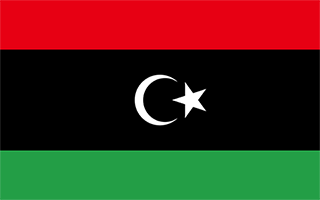Facts and Data
Webpages:
Official Unesco Page
Basis Data:
Unesco World heritage since: 1982
Size of heritage:
Coordinates:
Longitude: 12,485°
Latitude: 32,805°
Summary
A Phoenician trading-post that served as an outlet for the products of the African hinterland, Sabratha was part of the short-lived Numidian Kingdom of Massinissa before being Romanized and rebuilt in the 2nd and 3rd centuries A.D.
Location on Map
Show bigger map on Openstreetmap
Archaeological Site of Sabratha
The Archaeological Site of Sabratha is a UNESCO World Heritage site located in the District of Zawia, Libya. This ancient city, situated on the Mediterranean coast, is renowned for its well-preserved Roman ruins and is considered one of the most significant archaeological sites in North Africa.
History
Sabratha was originally founded as a Phoenician trading post in the 5th century BC. It later became a prosperous Roman city during the reign of Emperor Augustus in the 1st century AD. The city flourished as a major trading hub, benefiting from its strategic location along the trade routes between the Sahara Desert and the Mediterranean Sea.
Under Roman rule, Sabratha experienced a period of great prosperity and development. The city was adorned with magnificent public buildings, including a theater, a forum, temples, and an amphitheater. The architectural style of Sabratha was heavily influenced by Roman culture, with grand structures built using local materials such as limestone and marble.
During the 5th century AD, Sabratha fell under the control of the Vandals, followed by the Byzantines in the 6th century. The city gradually declined in importance and was eventually abandoned in the 7th century due to the Arab conquest of North Africa.
Current State
Today, the Archaeological Site of Sabratha stands as a testament to the grandeur of the ancient Roman city. The site covers an area of approximately 120 hectares and is divided into several distinct areas.
The most prominent feature of Sabratha is its well-preserved theater, which is considered one of the finest examples of Roman theaters in the world. The theater could accommodate up to 5,000 spectators and is still used for cultural events and performances to this day.
Another notable structure is the forum, a public square surrounded by colonnades and adorned with statues and fountains. The forum was the heart of the city and served as a meeting place for social, political, and commercial activities.
The Temple of Liber Pater, dedicated to the Roman god of fertility and wine, is another highlight of the site. This temple features intricate carvings and is a testament to the architectural prowess of the Romans.
Despite the challenges faced by Libya in recent years, the Archaeological Site of Sabratha has managed to survive relatively intact. However, the site has suffered from neglect and looting during periods of political instability. Efforts are being made to protect and preserve the site, including the establishment of a local management plan and increased security measures.
The Archaeological Site of Sabratha offers visitors a unique opportunity to step back in time and explore the rich history of the Roman Empire in North Africa. Its well-preserved ruins and stunning architecture make it a must-visit destination for history enthusiasts and archaeology lovers alike.
Videos from the area
Videos provided by Youtube are under the copyright of their owners.




